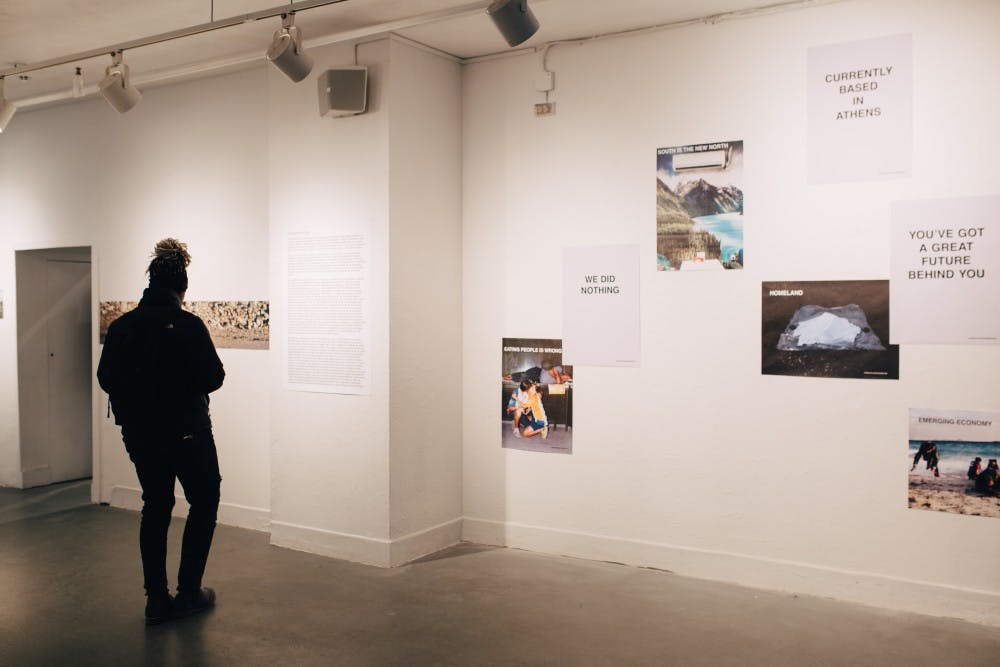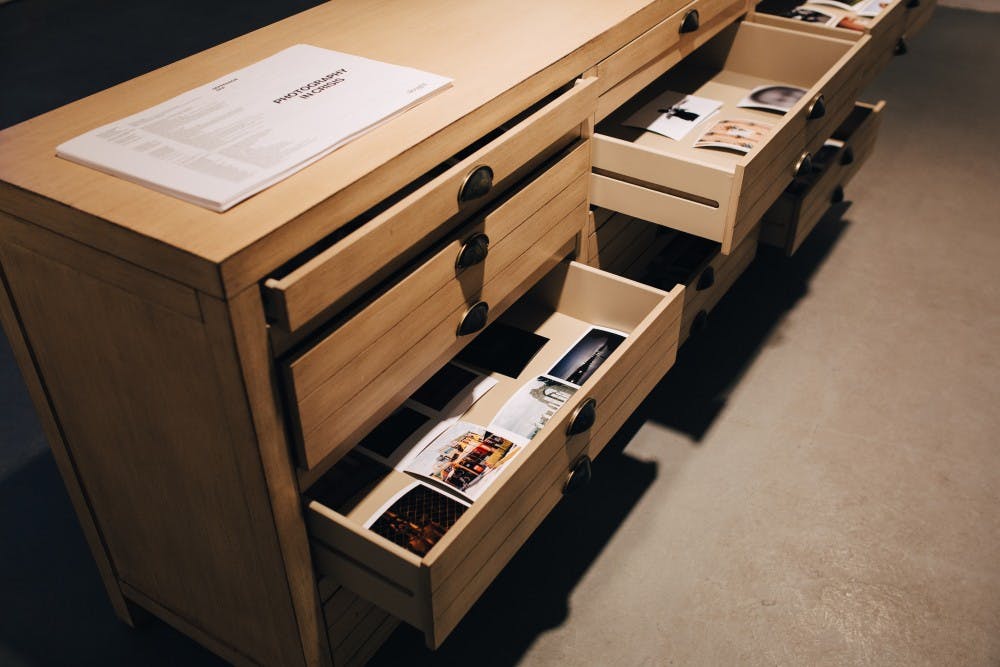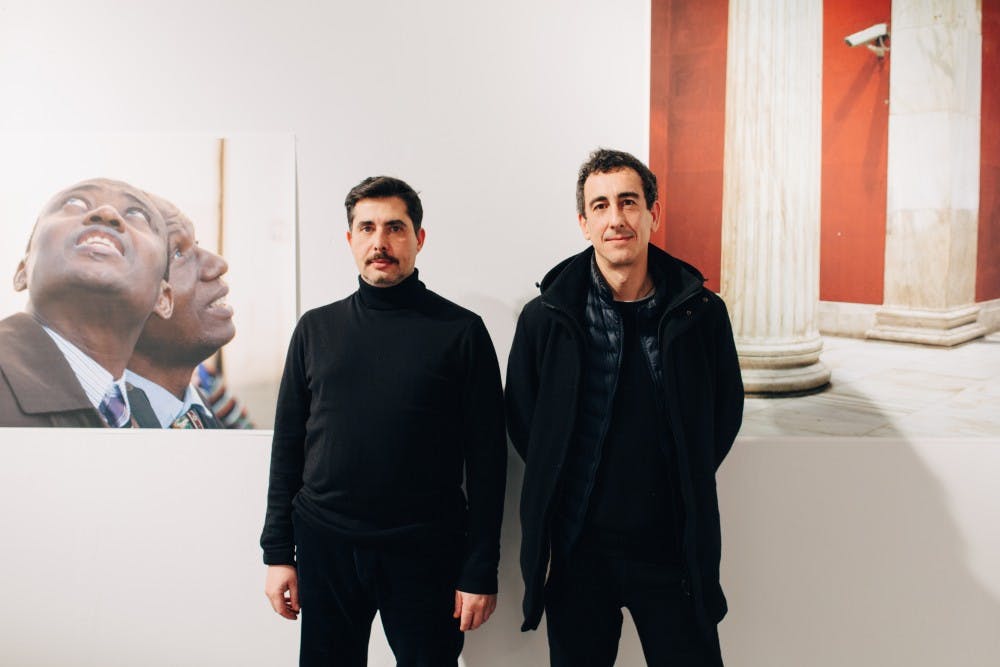Upon entering Slought's front gallery at 40th and Walnut, a wardrobe full of photos takes center stage. A video flickers across one of the walls, playing ambient music that compliments more pictures lining the walls. Inside the drawers of the center wardrobe are piles of unlabeled pictures, representing the combined efforts of not one, but a community of artists.
The next room continues the photography narrative, piecing together a story of crisis through the work of members of the Depression Era Project based in Athens, Greece. The non–profit organization Slought, which is located on Penn's campus, invited the Depression Era Project to create Photography in Crisis, and made it the second of three exhibits within the series Photographies of Conflict. The organization hosts these exhibits to promote collaboration and an understanding of cultural, societal, and political change through the visual interpretation of crisis.
Artists, writers, photographers, and designers of varying backgrounds—but with a common connection to Athens—work together to shape the Depression Era Project. This group was formed in 2011 by a small group of friends who believed there was a need to document and understand the effects of economic crisis in Greece, and grew slowly to its current number of 36 members. Photographer and longtime member of the organization Georges Salameh discussed the origins of the group, saying “We were kind of bombarded by the media, and from that there was a huge noise around us, different kinds of narratives, and maybe we wanted to join forces to create an alternative narrative over that.”
In Salameh’s words, the project’s effort to “propose another voice for what was happening” is realized through the fusion of these various artists’ works.
The six artists who established Photography in Crisis flew in from Greece for the opening night, introducing themselves and their work to a group of about fifty people who attended the reception. One of the characteristics of the exhibit that they highlighted was the collaborative nature of the visual representation, and how the distinctiveness of each artist strengthens the combined narrative. This exhibit encompasses eight years of work and represents crisis within the topics of migration, the economy, personal struggle, and family relations in Greece.

There will be a public workshop, called Open Archive, held on Wednesday, Jan. 23 from 10 a.m. to 12 p.m. Attendees will be asked to pick out photographs from the wardrobe at the center of the exhibit and asked to piece together their own narrative of events using the pictures they choose.
Photographer Yiannis Hadjiaslanis says the team is slowly taking labels off of the pictures to allow the photographs to be viewed with more than one defined perspective. He says that “We want them to build parallel narratives. We want the group to work together,” since the exhibit was only one version of the potential photographic narrative.

In response to the question of how this exhibit on crisis in Greece might be relevant to us as residents of Philadelphia, Salameh says “We realized very quickly that the crisis was not only about Athens, or about Greece, but was something much bigger than us, something even you can relate to."
This is the Depression Era Project’s first exhibit in the United States, and as members of the Philadelphia community, it's a good idea to take advantage of the cultural connections Slought is offering to us, right on our campus. The exhibit is free and open to the public until Feb. 17.

